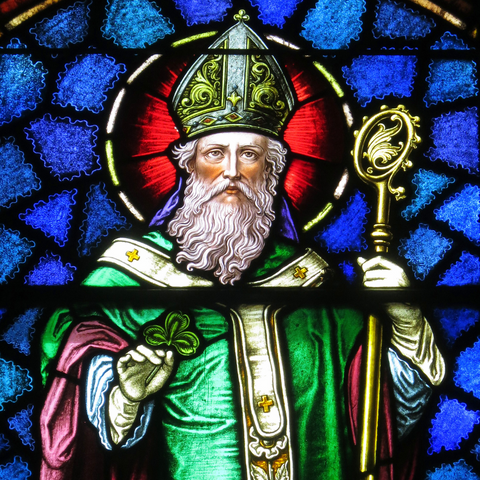St. Patrick's day is just around the corner! As we get ready for the festivities, have you ever stopped to wondered about the history behind the holiday? And what is the significance of one its most popular symbols: the Four Leaf Clover? What makes the Four Leaf Clover so lucky?
In this week's blog, we'll be taking a dive into the history of the holiday and it's importance worldwide!

St. Patrick is a legendary figure in Irish culture and has become a symbol of Irish heritage and identity around the world. His feast day, March 17th, is celebrated as a national holiday in Ireland and has become a popular occasion for celebrations and festivities in many other countries around the world.
Today, St. Patrick is remembered for his missionary work in Ireland and his role in spreading Christianity throughout the country. He is also associated with many symbols of Irish culture, such as the colour green, the traditional Irish music and dance that are often featured in St. Patrick's Day celebrations, and most especially, the Four Leaf Clover.

The Four Leaf clover is a symbol of luck that has been used for centuries. It is often associated with St. Patrick's Day and is a popular motif in Irish culture. But where did this symbol come from, and what is its significance?
The Four Leaf clover is a variation of the common three leaf clover, which has been a symbol of Ireland for centuries. The Celts believed that the shamrock had mystical properties and used it in their religious ceremonies. St. Patrick used the shamrock to explain the concept of the Holy Trinity to the Irish people when he brought Christianity to Ireland.
The Four Leaf clover, on the other hand, is a rarity. It is estimated that only one in 10,000 clovers has four leaves! This rarity is what gives the four leaf clover its special significance and has made it a symbol of luck.

The Four Leaf clover is often associated with luck, but its meaning goes deeper than that. Each leaf of the clover has a symbolic meaning. The first leaf represents faith, the second leaf represents hope, the third leaf represents love, and the fourth leaf represents luck.
The Four Leaf is also believed to have protective qualities. In many cultures, it is thought to ward off evil spirits and protect the wearer from harm.
In addition to being a popular symbol of luck and good fortune, it is often used in artwork and jewelry, and many people carry one in their pocket or wear one as a charm.
The Four Leaf has also been used in scientific research. Scientists have studied the genetics of clover plants to try to understand why some plants produce four leaves instead of three. This research has helped revealed how genetic mutations occur in plants and animals!

Knowing the history of St. Patrick's day and the symbolism of the Four Leaf Clover surely sheds some light on this notorious party holiday. The story of St. Patrick is a fascinating one, full of adventure, faith, and the power of one person to make a difference in the world. His legacy has endured for centuries and has become an important part of Irish culture and identity. And whether you believe in its luck-bringing properties or not,
The Four Leaf clover is a fascinating symbol with a rich history and cultural significance!
Have fun this St. Paddy's day weekend! Be safe and drink responsibly!
☘️
